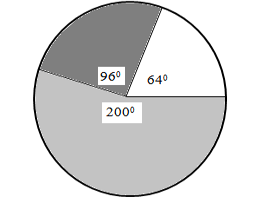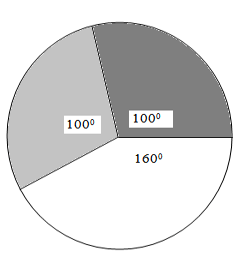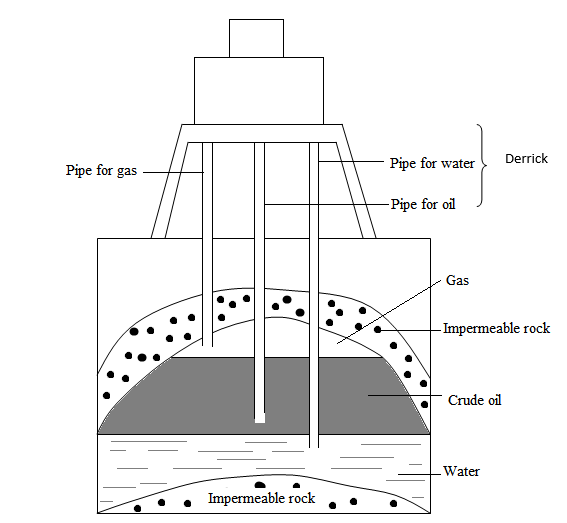QUESTIONS
SECTION A
Answer ALL the questions in this section.
-
- Mention three factors that influence the occurrence of minerals (3marks)
- Name the minerals found in the following areas in East Africa.
- Kariandusi (1mark)
- Tororo (1mark)
-
- Give two social factors influencing agricultural activities in Africa (2marks)
- State three features of plantation agriculture (3marks)
-
- Name two hardwood tree species found in Kenya (2marks)
- Give three problems facing forestry in Kenya (3marks)
-
- State three conditions necessary for the growth of tea (3marks)
- Name two areas in the Eastern highlands of Kenya where tea is grown (2marks)
-
- State two uses of maize in Kenya (2marks)
- State three problems facing maize farmers in Kenya (3marks)
SECTION B
Answer question 6 and any other two questions from this section
-
- A form three class carried out a field study on beef farming at Konza ranch.
The results of their findings are summarized in the table below:-
Category
Breed
Short-horned Zebu
Boran
Calves
Cows
Mature bulls
80
250
120
250
400
250
Total
450
900
- Using the data in the table above draw proportional circles to represent the totals of the two breeds of Cattle (8marks)
- State three objectives the class formulated before going for the field study. (3marks)
- Prepare a questionnaire of four questions for collecting information in the ranch (4marks)
-
- Explain four problems facing beef farmers in Kenya (8marks)
- List two exotic breed reared in Kenya (2marks)
- A form three class carried out a field study on beef farming at Konza ranch.
-
-
- State four conditions that are necessary for the growing of oil palm (4marks)
- Describe the stages involved in the harvesting and processing of oil palm fruits. (7marks)
- Apart from making oil, give four uses of oil palm tree (4marks)
- Explain four ways in which oil palm contributes to Nigerian’s economy (8marks)
- Give two problems oil palm farmers in Nigeria experience (2marks)
-
-
- What is market gardening (2marks)
- Describe the characteristics of market gardening (3marks)
-
- Horticulture is more developed in the Netherlands than in Kenya. Give four reasons for this (4marks)
- Explain four ways in which Kenya has benefited from horticultural farming (8marks)
- Explain four problems experienced by Horticultural farmers in Kenya (8marks)
-
- Name four oil-producing counties in the middle East (4marks)
- Draw a well-labelled diagram to show the occurrence of oil in the rock structure and the location of an oil derrick (5marks)
-
- Kenya is a potential oil producer.
Name three by-products she is likely to get when the crude oil is mined and refined (3marks) - Explain four benefits Kenya is likely to get from oil when it will be mined (8marks)
- Kenya is a potential oil producer.
- List five problems Kenya is likely to experience in mining crude oil (5marks)
-
-
- What agroforestry? (1mark)
- Explain four reasons why agroforestry is being encouraged in Kenya (8marks)
- Give two examples of softwood trees found in Kenya (2marks)
- Explain four characteristics of softwood forests in Canada (8marks)
- Explain three problems that affect forestry in Canada (6marks)
-
MARKING SCHEME
-
- Factors that influence the occurrence of minerals
- Vulcanicity
- Erosion
- Weathering
- Sedimentation
- Evaporation
- Metamorphism (3x1= 3marks)
-
- Kariadusi - Diatomite (1x1= 1mark)
- Totoro - Limestone or Phosphate (1x1= 1mark)
- Factors that influence the occurrence of minerals
-
- Social factors influencing agricultural activities in Africa
- Traditional and culture
- Ownership and inheritance of land
- Religion (2x1= 2marks)
- Features of plantation agriculture
- Crops are usually raised on large estates of more than 40hectares/100acres
- Most large estates are owned by foreign companies
- Establishment and maintenance of the estates requires large sums of money.(3x1= 3marks)
- Social factors influencing agricultural activities in Africa
-
- Hardwood species found in Kenya
- Meru oak
- Elgon olive
- Elgon teak
- Cedar
- Mvuli
- Mangrove (2x1= 2marks)
- Problems facing forestry in Kenya
- Occurrence of forest fires
- Pests such as aphids and diseases that destroy trees
- Overgrazing
- Debarking of trees
- Over exploitation
- Conflicts in land use
- Excision (3x1= 3marks)
- Hardwood species found in Kenya
-
- Conditions necessary for growth of tea
- Cool to warm temperatures averaging 21ºC during growing season
- Altitude raging from 1000m to 1700m above sea level
- Deep well drained and slightly acidic soils
- Areas shielded from strong sunlight and violent winds
- Cheap labour during preparation, weeding, pruning and picking (3x1= 3marks)
-
- Nyambene hills in Nyambene
- Nyeri
- Thika
- Murang’a
- Maragua
- Kiambu (2x1= 2marks)
- Conditions necessary for growth of tea
-
- Uses of maize in Kenya
- It is a staple food for Kenyans
- Stalks, leaves and other remains from the maize cobs are used to feed domestic animals
- Stalks and cobs are used to provide domestic fuel
- Grains are used in manufacturing of corn oil and animal feeds (2x1= 2marks)
- Problems facing maize farmers in Kenya
- High cost of farm inputs e.g. fertilizers
- Unstable/fluctuating prices
- Prolonged drought or unfavourable weather conditions
- Flooding of the market by cheap imports from COMESA countries
- Pests e.g. weevils and diseases i.e. Maize stalkborer
- Monoculture leading to soil exhaustion
- Poor marketing strategies (3x1= 3marks)
- Uses of maize in Kenya
-
-
-
- Short-horned Zebu
Total is 450
√450 ≈ 21.2 - Boran
Total is 900
√900 ≈ 30
Scale: 1cm represents 6units
Radii for short-horned
21.2 = 3.5cm
6
Radii for boran
30 = 5cm
6 - Short-horned Zebu

- Calves 80/450 x 3600 = 640
- Cows 250/450 x 3600 = 2000
- Nature bulls 120/450 x 3600 = 960
- Boran

- Calves 250/900 x 3600 = 1000
- Cows 400/900 x 3600 = 1600
- Nature bulls 250/900 x 3600 = 1000
- Short-horned Zebu
- Three objectives the class formulated before going to the field
- To find out the total number of beef cattle kept in the Konza ranch.
- To find out the type of pasture used to feed the cattle.
- To find out which breed is dominant at the Konza ranch. (1x 3= 3marks)
- Questionnaire
- Where do you sell your beef cattle?
- How many times per year do you market your beef cattle?
- What is the size of Konza ranch?
- After the cows deliver do you milk them?
- Any other relevant question (1x4= 4marks)
-
-
- Four problems facing beef farmers in Kenya
- Prolonged drought – Leads to insufficient pastures
- Pest such as ticks – Leads to death/ weak animals.
- Marketing problem – leads to low prices for the beef.
- Poor pastures – Leads to emaciated /weak animals.
- Poor infrastructure – Animals loss weight when being taken to the market.
- Competition from other types of meat – Hence low prices/ farmers loose moral.
(Explain each) (2x4= 8marks)
-
- Aberdare Angus
- Hereford
- Galloway
- Short-horned (1x2= 2marks)
- Four problems facing beef farmers in Kenya
-
-
-
- Four conditions that are necessary for the growing of oil palm
- High rainfall which is well distributed throughout the year.
- High temperatures throughout the year.
- Fertile soil which are well drained
- Trees should be planted around the plots to protect the crop from strong wind.
- Enough capital to pay workers and maintain feeder roads and vehicles(1x4= 4marks)
- Stages involved in harvesting oil palm:-
- Oil palm fruits are harvested 3 years after planting
- Ripe fruits are cut using curved knives
- Fruits should be harvested every 5-10days.
- After harvesting the fruits must be quickly transferred to the processing factory.
- Stages involved in processing:-
- At the factory, fruits are weighed.
- Fruits are put into tube-like cages or trucks.
- The tube-like cages or trucks passed through hot steam to sterilize the fruits.
- Fruits are taken to stripping machine to remove their stalks and separated from any other unwanted materials.
- Fruits put in digesters for further cooking to soften them into pulp.
- Pulp is separated from the kernel
- The pulp is pressed to extract the oil.
- Kernel is ground to remove the shells and extract oil. (1x7= 7marks)
- Use of oil palm tree
- Leaves used for thatching houses
- Leaf-ribs provide building materials
- Old trees-trucks sap is tapped to make beer
- Shell and rib are used as fuel
- Leaves are used in making brooms, hats and mats.
- Four conditions that are necessary for the growing of oil palm
- Four ways in which oil palm contribute to Nigerian Economy:-
- Create employment – Farmers improve their living standards.
- Earns foreign exchange – Used to develop other sectors of the economy.
- Raw materials to related industries – leads to industrial development.
- Enhance development of infrastructure
- Provide cheap building materials
- (Explain any 4) (4x2= 8marks)
- Two problems oil palm farmers in Nigeria experience:-
- Prolonged drought
- Concentration by farmers on food crops than oil palm
- Diseases such as anthrax nose and blast
- Poor management of producer boards and co-operative societies. (2x1= 2marks)
-
-
- Market gardening
- Cultivation of fruits and vegetables near a market centre to feed the local market. (2marks)
- Four characteristics of markets gardening:-
- Farm generally small in size due to limitation land
- Land intensively farmed to maximize production
- Advanced scientific techniques of crop production
- Labour intensive
- Continuous application of manure and fertilizer
- Feed the local market (3x1=3marks)
-
- Four reasons why horticultural is more developed in Netherlands than in Kenya.
- High local demand for horticultural products in Netherlands than in Kenya.
- Netherland has a long experience in horticulture than in Kenya.
- Markets strategy in Netherlands is more organized than in Kenya.
- Netherlands has better and improved infrastructure than Kenya.
- Netherland is centrally located within a rich region to market horticultures than in Kenya.
(4x1= 4marks)
- Four ways in which Kenya has benefited from horticultural:-
- Provide food to many people
- Creates employment hence people improve their living standards.
- Raw materials for related industries hence establishment of many industries.
- Earn foreign exchange which is used to develop other sectors.
- Enhance development of infrastructure
(Any four explained) (4x2= 8marks)
- Four reasons why horticultural is more developed in Netherlands than in Kenya.
- Four problems experienced by horticultural farmers in Kenya.
- Prolonged drought which lowers yields
- Poor marketing strategies hence low prices
- Limited local markets hence most produce goes to waste.
- Inadequate capital to buy the farm inputs, and pay the works
- Poor infrastructure
- Pests e.g. aphids and diseases e.g. Bacterial wilt.
(4x2= 8marks)
- Market gardening
-
-
- Iran
- Iraq
- Saudi Arabia
- Kuwait
- Yeman
- U.A.E.
- Qatar
- Bahran
- Oman (4x1= 4marks)
- Diagram

(5x1= 5marks) -
-
- Bitumen
- Wax
- Sulphur
- Lubricants
- Petrochemicals (3x1=3marks)
- Explain four benefits Kenya is likely to get from oil.
- Creation of employment. The unemployment rate in Kenya will drop.
- Cheap oil products. This will lead to low prices of some commodities.
- Enhanced develop infrastructure
- Earn foreign exchange. This will lead to the development of the economy.
- Raw materials to industries.this leads to development of other industries.
Explain (4x2= 8marks)
-
- Five problems Kenya is likely to experience in mining
- Shortage of capital
- Limited skills and technology
- May cause civil conflict if not well managed.
- Companies involved in exploitation of oil are foreign owned leading to reputation of profits
- Air pollution (5x1= 5meks)
-
-
-
- Agroforestry is a system of agriculture which involves intercropping of trees and crops. (1mark)
- Four reasons why agroforestry is encouraged in Kenya:-
- Supply of fuel to the farmer
- Supply timber to the farmer
- Create employment opportunity
- Protect soil from erosion
- Raise water table
- Create scenic beauty
- Conserve environment
- (Any four well explained) (4x2= 8marks)
- two examples of softwood trees found in Kenya
- Cypress
- Pine
- Podo
- Kenya Cedar (Juniper)
- Bamboo (2x1= 2marks)
- Four characteristics of softwood forests in Canada
- Conical in shape
- Pure stand
- Needle-like leaves
- Flexible branches
- Evergreen
- Shallow rooted (4x2= 8marks)
- Three problems that affect forestry in Canada
- Severe winter
- Rugged landscape
- Wild fire
- Pests and diseases such as a aphid
- Over exploitation
- (Any four well explained) ( 3x2)m =m6
-
Download Geography Paper 2 Questions and Answers - Form 3 End Term 3 2022 Exams.
Tap Here to Download for 50/-
Get on WhatsApp for 50/-
Why download?
- ✔ To read offline at any time.
- ✔ To Print at your convenience
- ✔ Share Easily with Friends / Students

